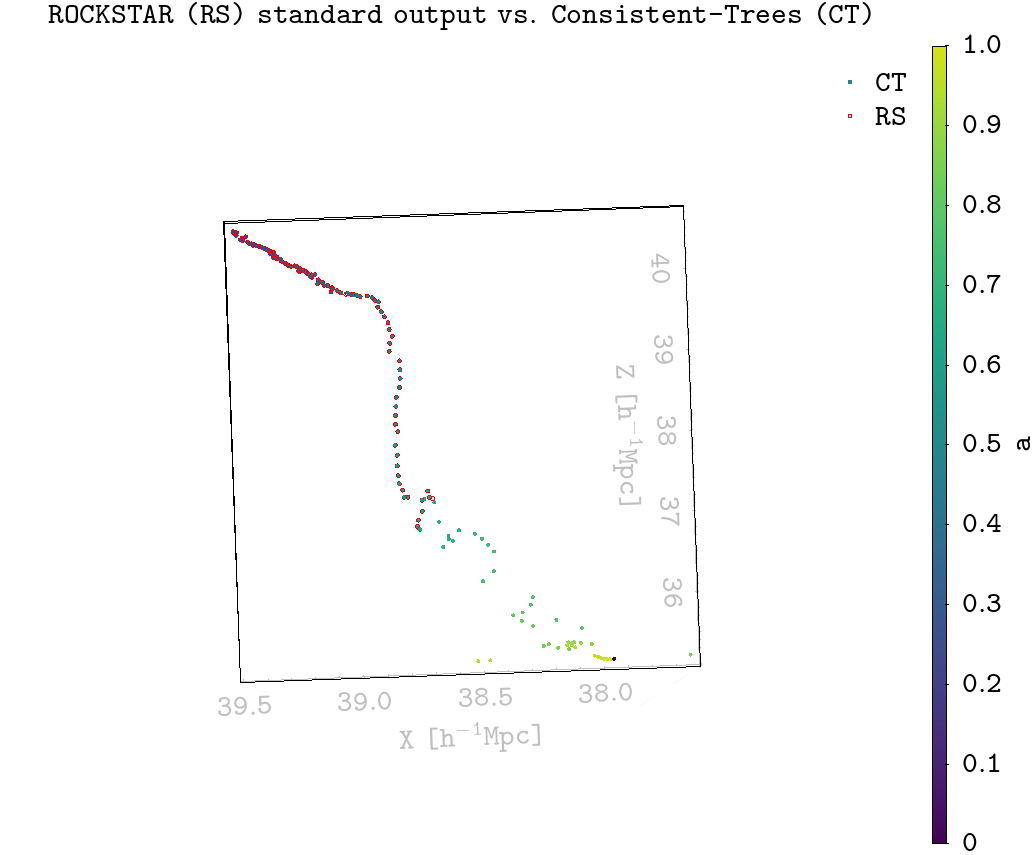Welcome to Doris Stoppacher's personal webpage
Personal research and project web page
A testrun on merger trees part V
— —
Summary: In this post we compare the redshift evolution of halo properties using descendant information from a halo finder directly and from a tree finder run on top. We found that there is little difference between the two approaches and that surprisingly less variation in e.g. the fraction of shared particle IDs between two snapshots was found (compare Fig. 3 and Fig. 4). However, if a tree builder is not used then the full redshift history of the particular halo might not be traced correctly (see Fig. 2).
This is the continuation of the post from 2021-02-26 were we showed results on the median variation of halo properties when following halos on the their main progenitor branch. Thereby we used only descendant information provided directly by the halo finder Rockstar (RS). In this post we compare our findings using this simplified approach with results when running the tree finder Consistent-Trees (CT).




Possible reason of uncertainties might be:
- the resolution of the simulation (only 256^3 particles in a box of 50h-1Mpc)
- too large time steps between simulation
- parameter using for Consitent-Trees were not particularly chosen but the default setting used
— —